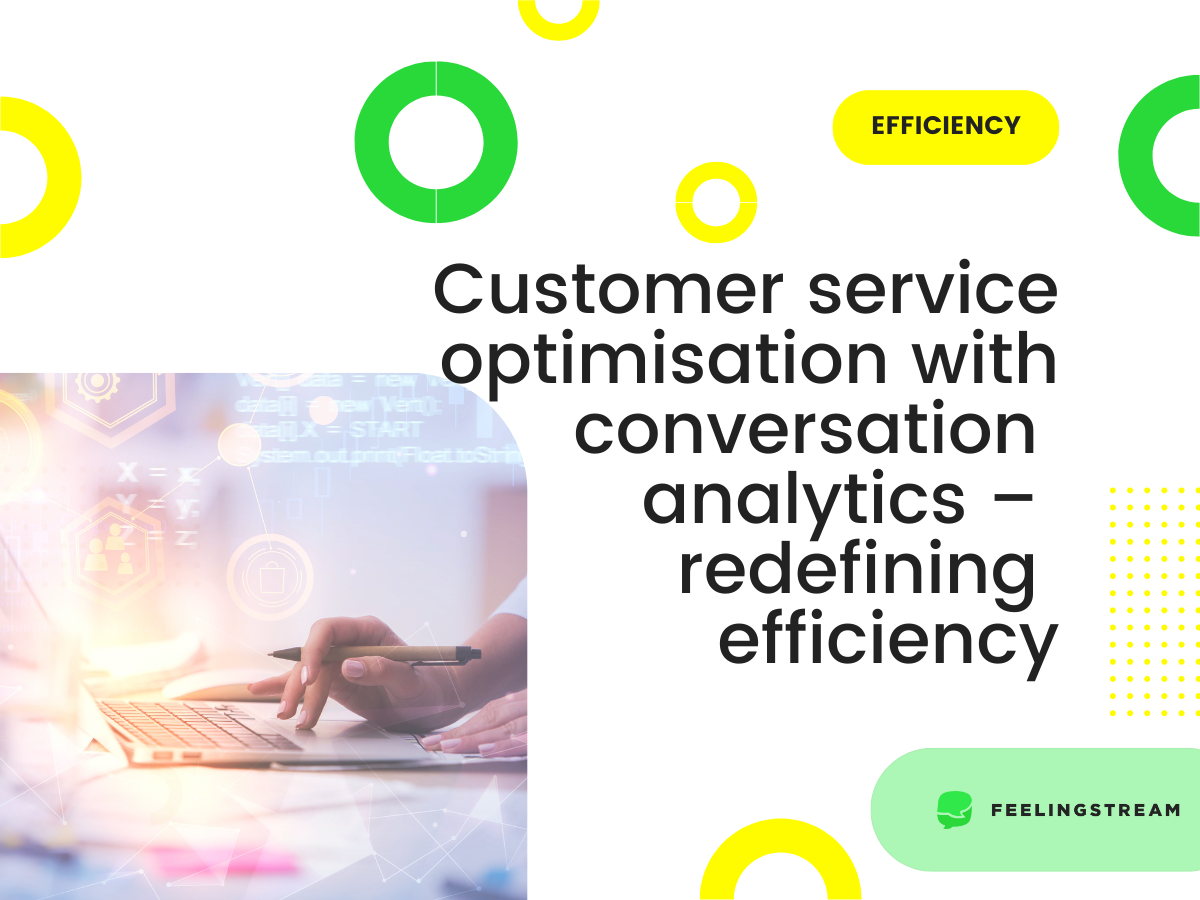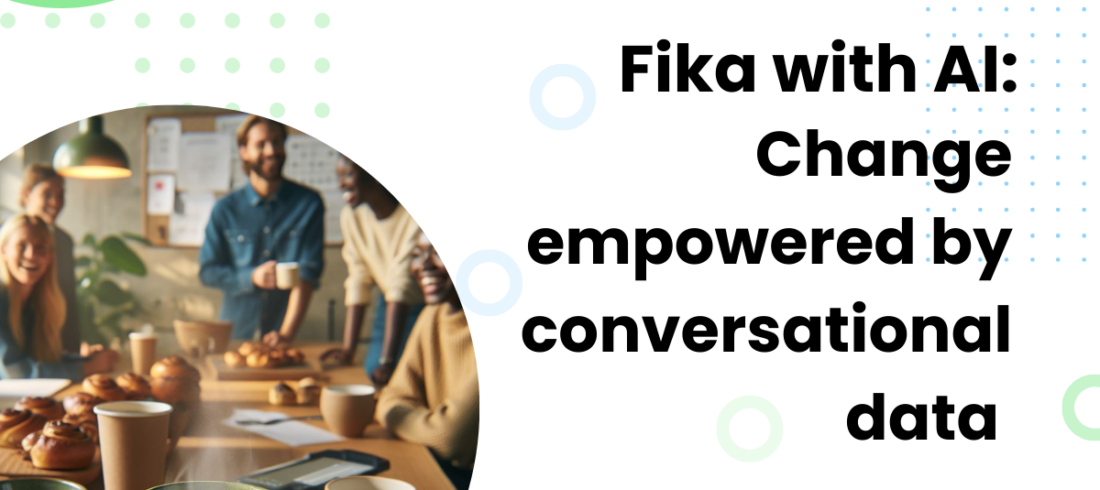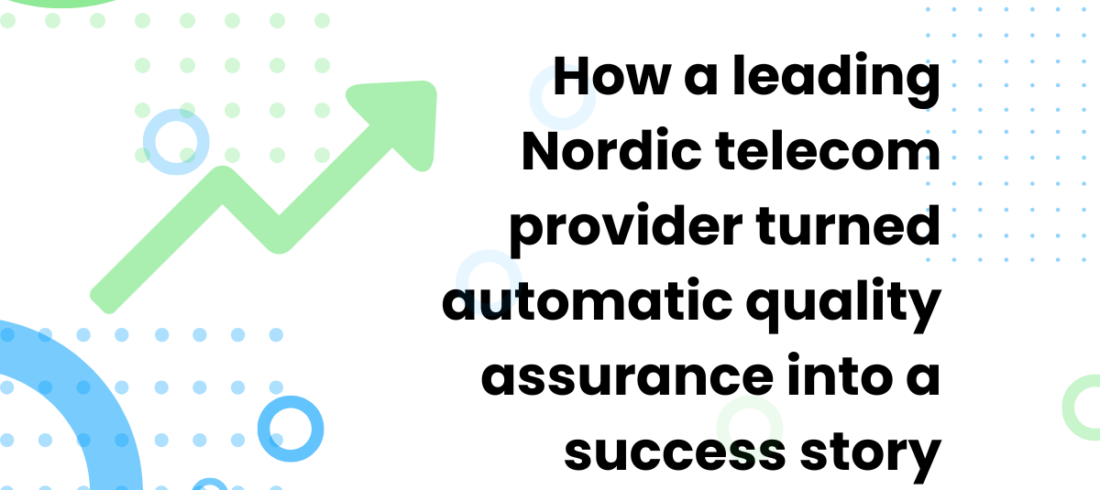Companies, no matter if large or small, always strive for efficiency and one way of doing that is via customer service optimisation. With the variety of customer service channels, we understand that every conversation can be a cost and an opportunity. Optimising how we speak to our customers and where we communicate with them can lead to better efficiency and an increase in customer satisfaction.
New technologies need knowledge from existing conversations
Chatbots have been very popular in the last years. Almost every company wants to have one available to their customers. Simply having one may not mean fewer contacts to customer service personnel or fewer contacts in general. As times evolve, the questions and needs of the customers evolve as well. New issues arise and using chatbots will never result in immediate efficiency or less work by humans.
With LLMs and a variety of new advancements in the last year, companies are trying to see what else to automate. We now see how virtual assistants are making their way into the picture. New technologies are being tested and experiments are made everywhere and by everyone. One thing is for sure, those solutions can only be as good as their training.
What needs to lie at the core of being more efficient is working with the knowledge from the existing conversations. Conversation analysis need to be at the base of finding efficiency.
Below, we will describe a few different scenarios of customer service optimisation with findings from conversation analysis.
Customer service optimisation via forwarding contacts to other channels
When it comes to customer service channels and the variety of issues that the customers face, not every issue and support channel is equal.
The most basic of issues – frequently asked questions – are the working grounds of chatbots, email services, and virtual assistants. If you train them to handle the simple tasks and forward them to the appropriate channel for other cases, they will not take a large portion of the service volume. However, they will carry the load in which a human will not give too much extra value.
Issues tied to personal accounts, finances, and contracts should always be very clear and visible in the self-servicing channels like apps and self-service sites. When a person does need assistance with these, then most likely the most appropriate channel will be a human chat or a phone call.
Technical troubleshooting is something that can lead to a lot of back and forth. Therefore support may not be efficient in the email channel. Sometimes, email may be used to send some instructions to the customer. However, for more complex cases, it is best to ask the customers to contact phone support while they are at home and have time to troubleshoot.
One of our customers has found that by looking at the types of issues and what is the most efficient way to resolve them, they have managed to create a reduction in customer wait times and clear boundaries where cases are handled per topic. They have started registering certain incoming email contacts as callbacks for a time when it is suitable for the customer to handle issues in one good phone call rather than five emails over a long period, finding efficiency and improving the customer experience.
If customer service is analysed as a whole rather than several separate channels, efficiency can be found by streamlining processes and using the most appropriate and cost-effective channels.
Bettering self-service options
Generational differences come into play when we talk about who wants to call and who wishes to use self-servicing options. People who have grown up with technology are more likely to want to use self-service, apps and AI-based technological support systems. This means those systems must work well as the younger generation is also more ready to switch providers when any inconvenience occurs.
Bettering self-service options can be done by analysing contacts about self-service issues and prioritising changes to self-service by size and cost.
Another customer service optimisation angle is to analyse the issues customers are not currently handling in self-service and could. Clear self-service processes will always be less costly than providing all the support over the phone.
One of our customers has found that customer conversation analysis has given them an easy way to measure self-service issues. They now better understand the costs of these issues and this helps prioritise developments.
Using automation options
We are eager to investigate and use technological advancement. At the same time, we are not saying that human contact and customer service are going anywhere.
When we think of customer service optimisation via automation, what we’re proposing instead is to look at the extra things that customer service personnel have to do or the repetitive things they do and see how to optimise those processes.
Let’s run through a few methods of optimisation we have seen work well with our customers thus far:
- automated email routing based on the conversation content into different classes. Sorting topics to different folders and sending out automated replies for frequently asked questions can both reduce the manual work done by Agents and improve the speed of answering the emails.
- automated summaries of customer conversations that are added to the CRM system. This helps an Agent understand the contents of any previous contacts much faster and reliably than with human notes. Also it makes it possible for Agents to focus more on call quality and provide better service for the customer.
- using automated quality scoring of calls can help optimise quality assurance and improve training processes in customer service. There is more visibility with less time use on random sample analysis. The focus moves directly to the improvement areas.
What is the possible optimisation impact?
From Feelingstream’s practice, we have seen that optimising customer conversations with the base of conversation analysis can:
- reduce the contact volume by more than 10%
- reduce the back-and-forth and repetitive contacts by steering the customer to the appropriate channel
- reduce up to 90% of the after-call work
- help the Agents take 30% more calls
- help have an overview of the quality of 100% of the calls rather than the current 1-2%
- help prioritise each issue and make business decisions based on insights from customer conversations
It is very difficult to optimise and find efficiency without being able to analyse customer conversations. Relying on gut feelings or generic reports can only take you so far. If you’d like to work on your customer service optimisation, get in touch. We will be happy to talk with you and give you a short demo.




